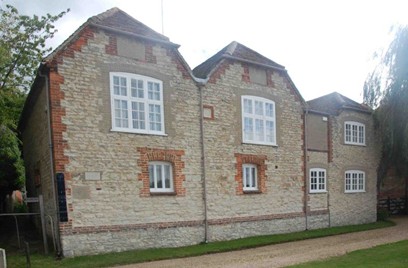
Originally a warehouse, this Grade II listed building is mid-18th century which was extended during the 19th century. Typical of many buildings in the parish it is course squared clunch rubble with brick dressings with a plain tiled roof. Originally it appears to be a 2-bay plan but extended to 3 and consisted of two storeys possibly with attics. The original Grade II listing particularly noted the very long purlins stretching the length of the drawing room and bedroom 1 of nearly 8 metres.
The small openings are now blocked and it is more likely that these held gantries for raising and lowering stores. The building has small windows at ground level and large inserted windows at the first floor. The later range to the right also has altered windows. The earlier bays had a brick framed datestone, which has now decayed.
On the front of the property are two stones (one recently restored) that show the level of water when the River Thames has flooded

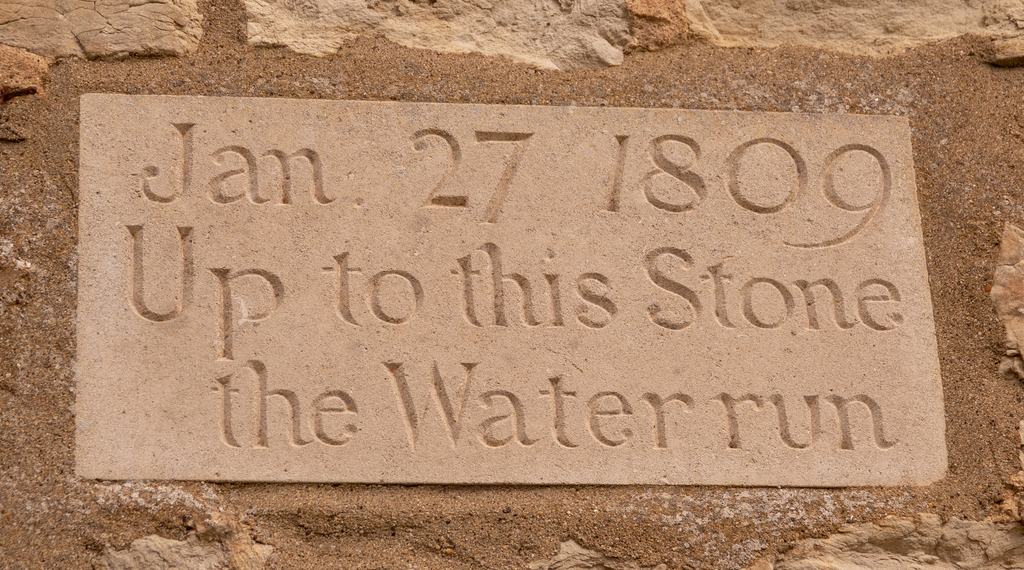
December y 3 1768 Up to this Stone the water run JG
Jan 27, 1809 Up to this Stone the Water run

A period of extreme cold at the beginning of January that year, with temperatures below 24°F, led to rain freezing on contact with surfaces. This was followed by a heavy snowfall and then a sudden thaw on the 24th, combined with rain, that melted the snow and ice very rapidly.
This combination created exceptionally high-water levels that led to the destruction of several bridges, widespread flooding in the Thames Valley and downstream the bridge at Wallingford suffered serious damage.
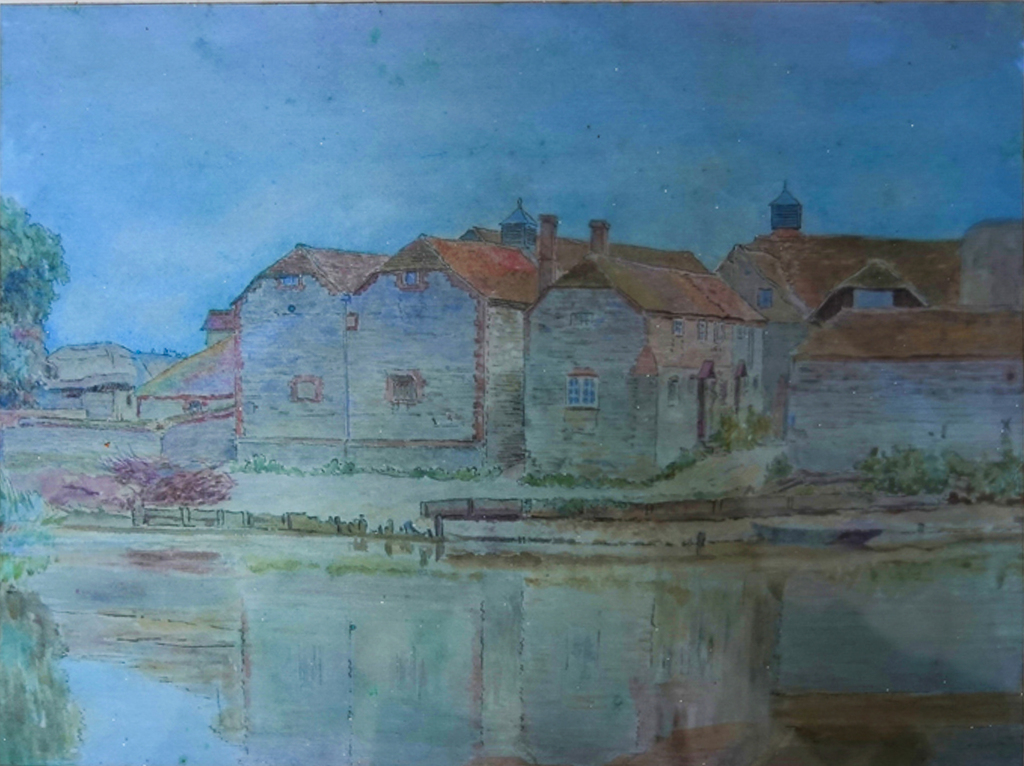
This 1920 painting of the Warehouse shows that the third bay is detached from the original warehouse building and is a cottage. The building originally in two sections, the warehouse, and a small cottage alongside have since been joined by an internal hallway. The doors and windows of the old cottage are clearly visible on the exterior walls.
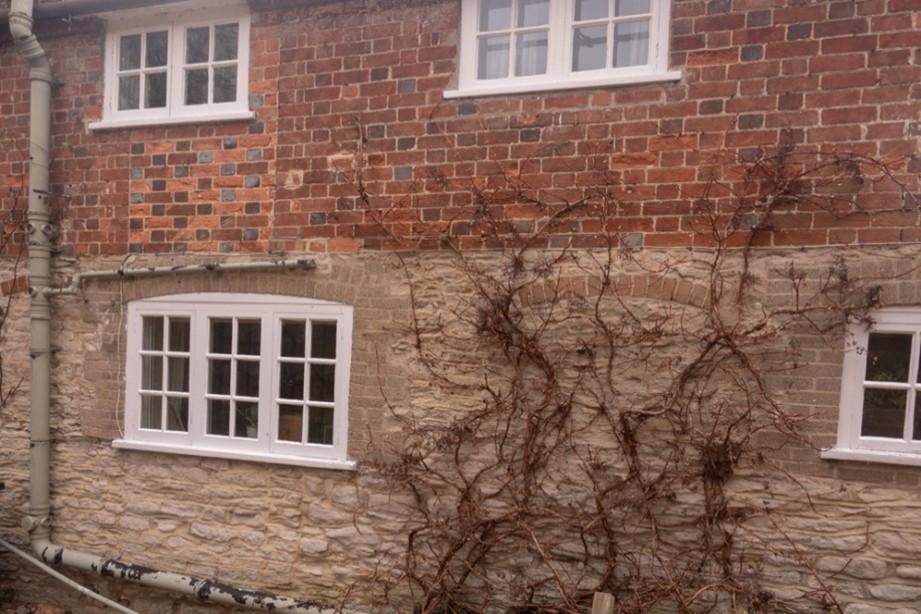
It is unknown what the use of the warehouse was, possibly related to the Shillingford Brewery which dates back to the mid-18th century, or the subsequent Shillingford Engineering Works.
The 1920 painting suggests that as the building is surrounded by farm buildings it could have been barns associated with the farm although few farms would have barns as substantial as those and being so close to the river may have been unsuitable to store grain.
There does not appear to have been a significant landing stage at any point.
The Historic England listing, which was applied on 14th May 1986, states that the Former Warehouse, now Swan Cottage … ‘Now forms part of the ancillary buildings of Shillingford Court. Included for group value’ Having responded to an enquiry Historic England have confirmed that ‘included for group value’ refers to other listed properties in Wharf Road and not the Court, which is not listed.
A historic building is included for ‘group value’ when its significance comes from being part of a collection of buildings that together create an important architectural or historic unity, or are a fine example of planning, such as squares, terraces, or model villages. This criterion allows for the listing of individual buildings that might not stand out on their own but are crucial to the overall character and coherence of a larger ensemble of historic structures.
The photo below is believed to have been taken in the early 1900’s. Although not clear on this copy the board on the right of the gateway has ‘Shillingford Works Company’ written on it.

By 1896 William Tom Goold was Managing Director of the Shillingford Works, Oxford. He was particularly interested in the manufacture and improvement of steam traps and also patented a calculator for belting measurements. The Works themselves were on the site of the Old Brewery in Shillingford. He became a Member of this Institution of Mechanical Engineers in 1889.
Henry Strauss MP had purchased the Old Wharf, which is adjacent, in 1946. He was created Lord Conesford in 1955, the same year that he purchased Swan Cottage. At the time there was talk of it being turned into a tea room that he felt would spoil the river for villagers who were enjoying the river bank. The low wall across what was the end of the road which sloped into the river was built to prevent people from launching large boats on trailers for free as opposed to paying and launching at Benson. Small boats that can be lifted into the river can still be launched today. Swan Cottage was bought with the view that it should be rented out not as a family home.
Initially the house was rented to Mr & Mrs Charles Part, friends of the Strauss family who owned and ran The General Trading Co. at 144 Sloane Street, Chelsea which had a royal appointment to the Queen, and were suppliers of fancy goods
In May 1962 Lord Conesford QC, applied to make alterations to Swan Cottage including mains water, central heating and gates and wall along the boundary with Shillingford Court
In 1962 General H.M. Paterson, moved from Riverside and lived in Swan Cottage until his death in 1979. Herbert had been a Brigadier in the Army and was awarded a CBE in 1954.
Ernest John Dorrell, a school teacher who lived in various properties including Crossways is listed on the Electoral Register as living at Swan Cottage. His wife Alwen Irvona had died in 1979 and is buried in St Laurence Churchyard.
Lady Conesford, Anne Strauss, studied sculpture at the Royal College of Art. She worked throughout her life and the otter sculpture which is still in the garden at Swan Cottage was originally commissioned for St Anne’s College Oxford in the 1960’s but then they found they had nowhere to put it.
Originally cast in bronze it is now in the grounds of her family home, Lawford Hall, Lawford, Essex in memory of her sister-in-law.

The fountain at Swan Cottage is one of a number of resin copies that were made for various members of the family who were interested in having one. They were made in the late 1990s.
Lord & Lady Conesford never lived in Swan Cottage but their daughter, Sally, moved there in 1992 when she returned from the United States. Trained at UCLA as an interior designer, Sally worked in Los Angeles before returning to England where she continued to work. During the time she was living at Swan Cottage she converted the garage which was underneath the first bay and also the unconverted area underneath the central bay into a kitchen and other rooms.
There were steps up to the small balcony off what is now the sitting room on the garden side plus equipment mounted above to haul up sacks of goods, since removed.
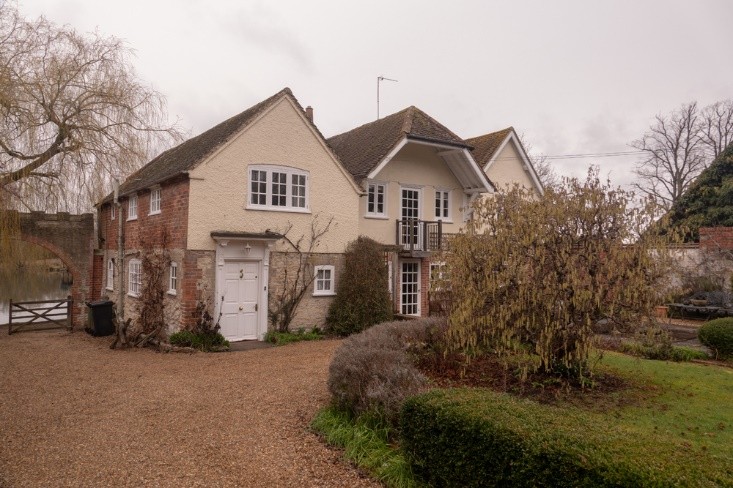

Rear views of the House
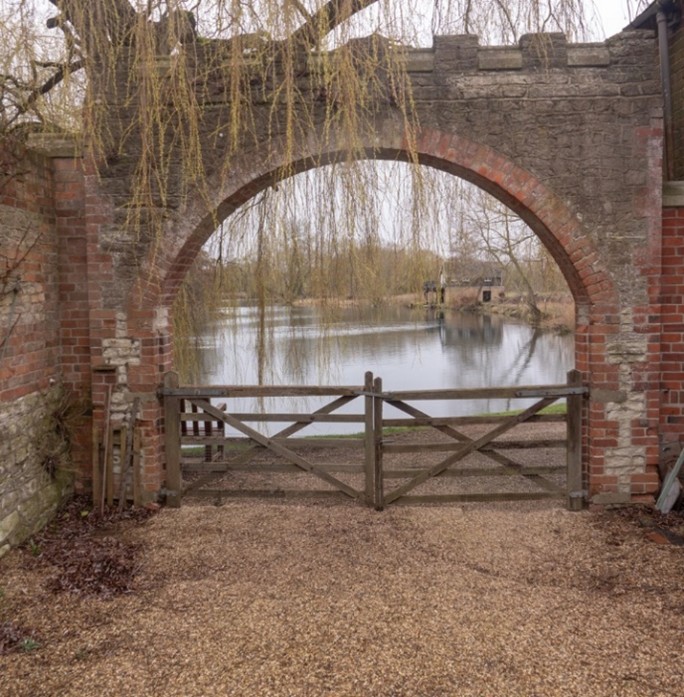
View through to the Thames
In 2003 Brigadier Brian Harding and his wife, Jacqueline, moved to the house. Brian told me the garden was formerly part of Shillingford Court, it was already split when Henry Strauss purchased the property in 1955. The foundations of the former glasshouse are still visible in the lawn following a period of very dry weather and white paint shows on what remains of the wall of the glasshouse.
Commissioned into the Royal Artillery in 1953 and seconded to colonial forces in Africa, Brian also served in Near East, Middle East and Africa again, as well as several tours in Germany and one in Australia at Woomera missile range. Awarded Military Cross 1972 and made CBE in 1983.
On leaving the Army in 1988 he became Field Director of the Royal British Legion and on final retirement wrote the Legion history ‘Keeping Faith’
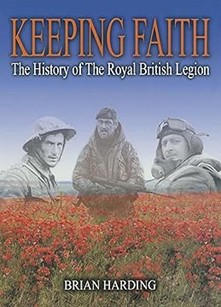
Compiled by Lynda Raynor